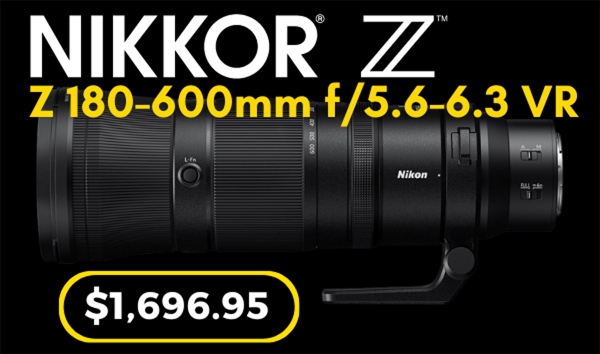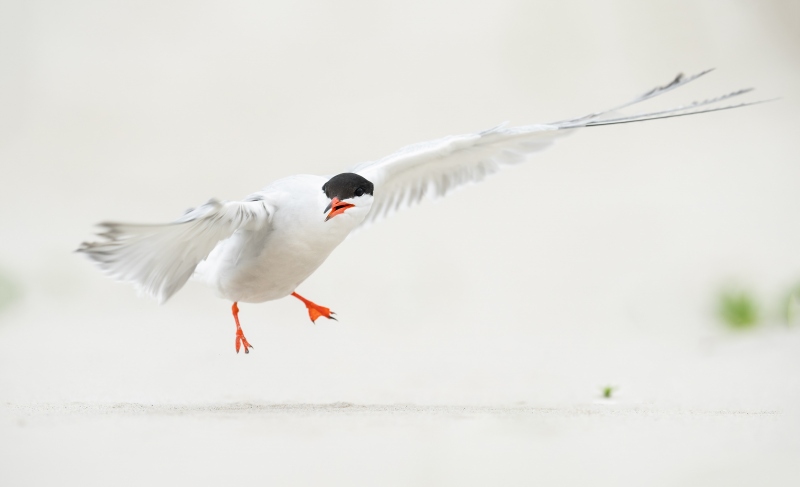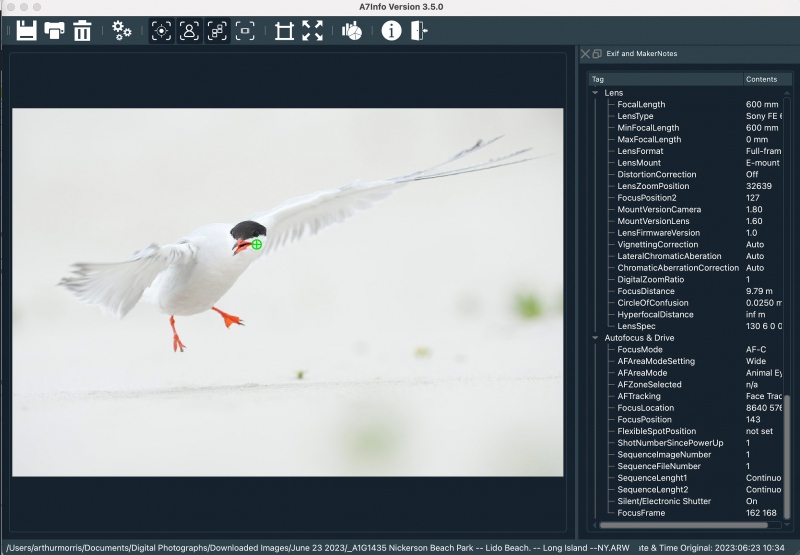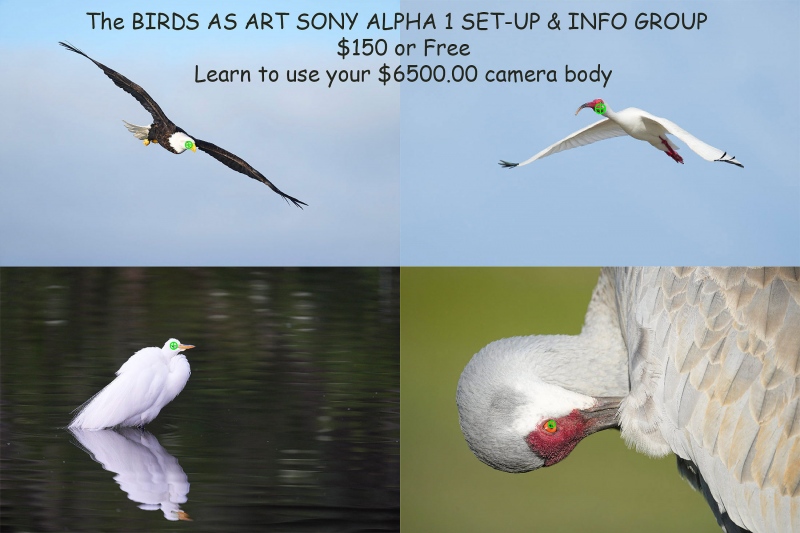What’s Up?
The weatherman should get some sort of award for the two worst consecutive forecasts in history. He said, “90% chance of heavy rain for Lido Beach beginning just after 11:00pm on Tuesday evening and continuing through late in the day on Thursday. It finally began to drizzle on Friday at about 11:00am. Thank the lord I never listen to the weather predictions as both Wednesday and Thursday were fantastic — cloudy bright with a strong east wind. Friday morning was just very good as the tern chicks — there were lots of just hatched babies — were not as cooperative as they had been the previous two mornings.
Today is Saturday 24 June and again, the forecast morning rain never materialized. Wherever you are and whatever you are doing, I hope that you too enjoy every day no matter the weather.
The Fact$ of Life
The market for editorial sales of natural history images has virtually disappeared. The incomes of the world’s top stock photographers are down by at least 90%. Like me, most depend on income from photo trips, the sale of educational materials, and income from this or that affiliate program.
In 2001, BAA sold the publication rights to images for nearly one-quarter million US dollars. That amount dropped to about $20,000 by 2011, and in 2017, to slightly more than $2,000.00. We’ve stopped counting. IPTs used to fill within days. Now I am happy to go with one or two folks, but I’d much rather have you along. And so it goes. In 2009, I turned to creating educational blog posts, now to the tune of 4039. Yes, 4039 educational blog posts. So, please remember to use either my B&H or Bedfords affiliate links for your major purposes. It does not cost you one cent to do either.
B&H
Many folks have written recently stating that they purchased a Sony a1 from B&H and would like their free membership in the Sony 1 Info and Updates Group, a $150.00 value. When I check my affiliate account, their orders have not been there. When I let them know that they get credit for B&H purchases only if they use one of the many B&H affiliate links on the blog or begin their searches with this link, they are always disappointed. If in doubt, please contact me via e-mail and request a BH link. I am always glad to help and to guide you to the right gear.
B&H Simplified
To ensure that I get credit for your B&H purchases, you can always click here. The tracking is invisible but greatly appreciated. And, you can use your PayBoo card. You must use the website to order. Thanking me for the past 4000 educational blog posts could not be any easier and will not cost you one penny. Please shoot me your B&H receipt for major purchases.
Bedfords Simplified
Click here to start your search. Choose standard shipping, and when you get to the payment page, enter BIRDSASART in the discount code box and hit apply. You will be upgraded to free second day air Fed-Ex and receive 3% cash back on your credit card once your stuff ships. Either is greatly appreciated by yours truly.
Nickerson Beach June 2023 Common Tern/American Oystercatcher/Black Skimmer In-the-Field Sessions
I am offering both morning and afternoon sessions from now through the end of this month. If you would like to become a better bird photographer, shoot me an e-mail to learn the details. Scheduling for these sessions can be arranged on short notice by checking the weather. A better option is to join me on the IPT. As I have nobody signed up, I can tailor the dates for the first one who does.
IPT veterans and couples or friends signing up together are invited to e-mail for discount information.
|
|
NIKKOR Z 180-600mm f/5.6-6.3 VR Lens |
The NIKKOR Z 180-600mm f/5.6-6.3 VR Lens!
Noting the excellence of the sharp, hand-holdable, and amazingly versatile Sony FE 200-600mm f/5.6-6.3 G OSS lens Nikon recently announced the NIKKOR Z 180-600mm f/5.6-6.3 VR lens. This new lens is 4 ounces lighter than the Sony 2-6, is 20mm wider at the short end, and the internal zooming is fast and efficient. Internal focusing means that the length of the lens does not change when you zoom in or out. It seems like a great addition to the Nikon lens lineup.
You can pre-order yours here from B&H and have them pay the tax by using your Payboo card, or get on a much shorter wait list by pre-ordering from Bedford’s here, using the BIRDSASART discount code at check-out, getting 3% back on your credit card when the lens ships, and enjoying free second day Fed-Ex.
From the Manufacturer
Ease of use: At its widest setting, the NIKKOR Z 180-600mm f/5.6-6.3 VR is great for locating your subject. With a mere 70 degree turn of the zoom ring, you can reach all the way to 600mm for tight framing with beautiful background compression.
Handheld shooting: Built-in optical Vibration Reduction (VR) provides a stabilization effect equivalent to a shutter speed of 5.5 stops faster, reducing camera blur when panning to track fast-moving subjects.
Pairs great with Z teleconverters: Increase your reach by 2x (up to 1200mm) with the Nikon Z Teleconverter TC-2.0x or 1.4x (up to 840mm) with the Z Teleconverter TC-1.4x (sold separately).
Feature rich: Quick release tripod foot, strap eyelet, customizable control ring and function buttons provide effortless operation.
Balanced and built-tough: Internal zooming maintains size and center of gravity, as well as minimizes dust intrusion.
I take issue only with the second item because image stabilization never stops motion blur caused by the subject movement. No matter as this will surely be a great lens for Nikon folks who photograph birds.
Chick Challenges!
Thanks to all of those who commented on the Remove the Adult Tern or Not? Your Call blog post here.
Please consider the following:
1- As the chicks hang out on soft sand, it is very rare to get a clean look at both feet. A good look at a raised foot is sometimes possible.
2- The chicks will beg at any tern that flies over with a fish. Thus, while I did alter the natural history of the moment by removing the adult, having an adult in the frame is not necessary to tell the story. As some pointed out, because it is my image, I am free to do what I want with it. Unlike many, I let folks know what I have done with most images.
3- Photographing tern chicks interacting with each other and with one or two of the parent birds is beyond extremely difficult. You need a fast shutter speed to freeze the action. You want some additional d-o-f for both chicks at close range and for the interactions, the latter especially because the two birds are rarely on the same plane. So on cloudy days, you will be working with relatively flat light and high ISOs, depending on how much you value the fast shutter speeds and small apertures. It has become apparent to me that the actual d-o-f with super-telephoto lenses is actually far less than what is shown by the various d-o-f calculators.
4- When an adult lands with a fish, making a great image is a huge challenge because of the problems mentioned above and the fact that the scene is always pure mayhem. Sorting out your AF options is a bear. Even if you get on an adult tern flying in with a baitfish and track it down to the beach, creating an image with some sense of order from the chaos is extremely difficult.
5- Seventy-five percent of the time food transfer takes from one to two seconds. Or less!
6- The chicks spend 99% of their time hiding in low growing beach vegetation.
I use Tracking: Zone almost exclusively for flight and switch to Tracking: Expand Spot almost instantly with the push of a single button when the adult lands, so that I have a much better chance of focusing exactly where I need to. None-the-less, focusing accurately as the adult hands the fish or mole crab to a chick, is close to impossible. Not to mention that there are often as many as three chicks scrambling to get fed. Lastly, subject (or subjects) orientation and the near-impossibility of getting the individual head angles right, add to the difficultly.
|
|
|
This image was created on 23 June 2023 at Nickerson Beach Park, Lido Beach, Long Island, NY. Seated on dry sand and working off the rear monitor using the foot-pod technique, I used the otherwise handheld Sony FE 600mm f/4 GM OSS lens and The One, the Sony Alpha 1 Mirrorless digital camera. ISO 1250. Exposure was determined via Zebras with ISO on the rear dial: 1/1250 sec. at f/8. (stopped down one stop!) AWB at 10:34:21am on a cloudy then-drizzly morning. Tracking: Zone/AF-C was active at the moment of exposure and performed amazingly. Be sure to click on the image to enjoy the larger, sharper, high-res version. Image #1: Common Tern adult taking flight from clean sand beach |
High Level Question
I was lucky to have made a sharp image at the relatively slow shutter speed of 1/1250 second. In the new flight guide, Arash and I recommend at least 1/2500 as a minimum for birds in flight with 1/3200 and 1/4000 second being better choices.
Why was I at 1/1250 sec. at f/5.6 when I could have been at 1/2500 sec. at f/4 with the same ISO?
|
|
|
Tracking: Zone/AF-C was active at the moment of exposure and performed amazingly well. Be sure to click on the image to enjoy the larger, sharper, high-res version. Image #1A: A7INFO screen capture for the Common Tern adult taking flight from clean sand beach image |
As Good As AF Gets?
The bird in Image #1 was the mate of a bird on a nest with one tiny chick and two eggs. I went for the ultra low perspective to take advantage of the gorgeous patch of beach that had been scoured clean by the strong winds from the east and a bit of rain. I had just finished a nice sequence of a wing stretch when the bird suddenly jumped up into the air and turned south. Shooting take-offs and flight off the toe-pod is silly difficult, but I followed my own advice and pushed the shutter button when the unexpected action occurred. I did my best to jerk the camera to my left in an attempt to keep the bird in the frame. Somewhat miraculously, the bird was perfectly framed in the first image. In the next few frames in the series, parts of the bird were badly cut off.
For the AF technology to track the eye as shown in the screen capture above is truly astonishing to me.
Note that I needed to rotate this image to level it to square. In addition, you can see that I did a bit of beach clean-up and re-positioned one small bit of beach vegetation.
|
|
|
Click on the image to better see the green eye-AF boxes in action. Sony Alpha 1 Flight Photography AF Points! |
The SONY Alpha a1 Set-up Guide and Info Group: $150.00 (or Free)
The SONY Alpha a1 Set-up Guide and Info Group is going great guns as more and more folks chime in with thoughtful questions and experience-based answers. As the a1 is becoming more readily available, more and more folks are getting their hands on this amazing body. By June 1, 2022, the group was up to an astounding 124 lucky and blessed folks. (More than a few folks own two or more a1 bodies! Early on, we discussed the myriad AF options. I gave my opinion as to the best one for flight and general bird photography. The best news is that everyone in the group receives an e-mail that includes a .DAT file with my a1 settings on it, and explicit directions on how to load my settings onto your a1; talk about convenience! I am now offering a .DAT file compatible with firmware update 1.20. Your entry into the group includes a consolidated Sony a1 CAMSETA2 INFO & GUIDE. New a1 folks will now receive six e-mails instead of the previous 28! You will receive new e-mails as they are published. Simply put, this e-mail guide is an incredible resource for anyone with an a1.
All who purchased their Alpha 1 bodies via a BAA affiliate link — B&H or Bedfords — will receive a free Sony Alpha a1 Set-Up Guide and free entry into the Info Updates group after shooting me their receipts via e-mail. (Note: it may take me several days to confirm B&H orders.). Others can purchase their guide here in the BAA Online Store.
Typos
With all blog posts, feel free to e-mail or to leave a comment regarding any typos or errors.


















Artie: On your question, this is what I read in the information your supplied about the photo: “1/5000 sec. at f/5.6 (stopped down one stop???)”. So the question doesn’t make sense to me.
With love,
Dr. Fish
Nor to me! Not sure how that error crept in but the info was correct in the text: 1/1250 sec. at f/8 (stopped down two stop0.
with love, a
Image #1 Common Tern adult taking flight from clean sand beach is interesting. I haven’t had to use ISO 1250 or ISO 2500 for many years. Image #1 is good.
Why was I at 1/1250 sec. at f/5.6 when I could have been at 1/2500 sec. at f/4 with the same ISO?
I’m going to guess you were shooting the mate with the hatchling and eggs when you anticipated this bird taking flight. For the former you may have needed a sliver more DOF for the hatchling and/or the eggs.
Yes to the sliver of additional d-o-f, but I was not at all expecting the bird to take flight.
With love and see you in the Galapagos pretty soon 🙂
with love, artie